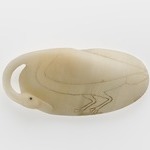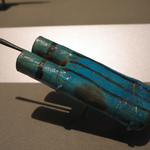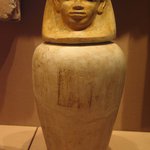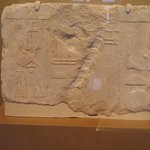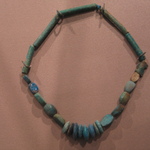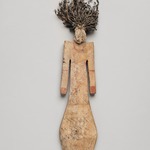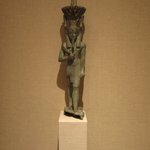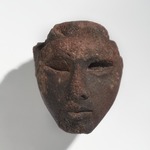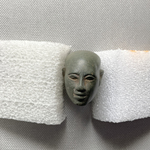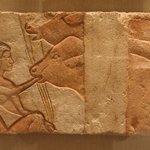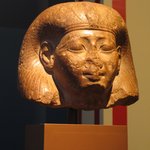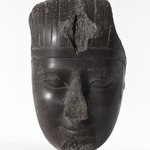

Cloaked Official, ca. 1759–1675 B.C.E. Quartzite, 27 1/2 in. (69.8 cm). Brooklyn Museum, Charles Edwin Wilbour Fund, 62.77.1. Creative Commons-BY (Photo: , CUR.62.77.1_NegH2_print_bw.jpg)

Cloaked Official, ca. 1759–1675 B.C.E. Quartzite, 27 1/2 in. (69.8 cm). Brooklyn Museum, Charles Edwin Wilbour Fund, 62.77.1. Creative Commons-BY (Photo: Brooklyn Museum, CUR.62.77.1_erg2.jpg)

Cloaked Official, ca. 1759–1675 B.C.E. Quartzite, 27 1/2 in. (69.8 cm). Brooklyn Museum, Charles Edwin Wilbour Fund, 62.77.1. Creative Commons-BY (Photo: Brooklyn Museum, 62.77.1_front.jpg)

Cloaked Official, ca. 1759–1675 B.C.E. Quartzite, 27 1/2 in. (69.8 cm). Brooklyn Museum, Charles Edwin Wilbour Fund, 62.77.1. Creative Commons-BY (Photo: , CUR.62.77.1_NegL166_57_print_bw.jpg)

Cloaked Official, ca. 1759–1675 B.C.E. Quartzite, 27 1/2 in. (69.8 cm). Brooklyn Museum, Charles Edwin Wilbour Fund, 62.77.1. Creative Commons-BY (Photo: , CUR.62.77.1_NegG_print_bw.jpg)

Cloaked Official, ca. 1759–1675 B.C.E. Quartzite, 27 1/2 in. (69.8 cm). Brooklyn Museum, Charles Edwin Wilbour Fund, 62.77.1. Creative Commons-BY (Photo: , CUR.62.77.1_NegH3_print_bw.jpg)

Cloaked Official, ca. 1759–1675 B.C.E. Quartzite, 27 1/2 in. (69.8 cm). Brooklyn Museum, Charles Edwin Wilbour Fund, 62.77.1. Creative Commons-BY (Photo: , CUR.62.77.1_NegE_print_bw.jpg)
Cloaked Official
Egyptian, Classical, Ancient Near Eastern Art
On View: Old Kingdom to 18th Dynasty, Egyptian Galleries, 3rd Floor
One of the period’s most dramatic and long-lasting innovations was the cloaked statue. The cloak symbolized the god Osiris, whose corpse was wrapped tightly in bandages and who was eventually reborn to everlasting life. Individuals shown with their bodies shrouded in a thick mantle thus expressed the wish to be reborn following their own physical deaths.









